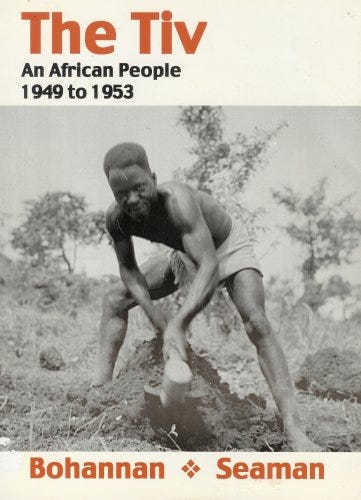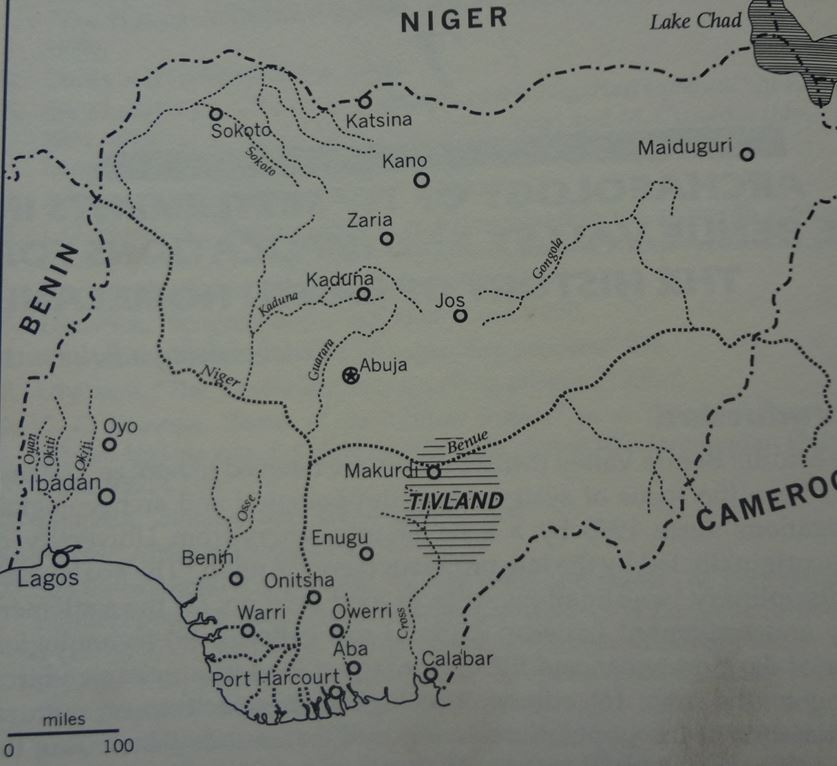Addendum: David Graeber's Notes on the Violence of Equivalence (Part 4)
when slavery transforms irredeemable debts and values into accounting equivalences
How does a traumatic process such as slavery transform social money into just its exchange value? David Graeber answers this question using twenty-eight months of ethnographic data from 1949-1953 from the husband-wife team of Paul Bohannan and Laura Bohannan.

The Tiv reside in the Benue River region of central Nigeria and organises themselves without a clear leader outside the domestic compound called ya (acephalous political structure). The region is dotted with similar domestic compounds related to each other by varying segments of kin lineages.

The Tiv became prominent in the literature because Paul Bohannan describes their money system as consisting of three spheres of exchange.1
The first is the everyday commodity market exchange kasoa dominated by women. This involves subsistence activities such as buying and selling food and household objects with non-related others.
The second and third spheres involve the prestige and power domains dominated by men in what can be called as gift exchanges. The second sphere involves the tugudu cloth (a long white cloth that may be dyed) and brass rods for gift payments for political reasons, payment for curing, acquiring magic, and entering into cult societies. Finally, the third sphere involves the (sister) exchange of women or wards for marriage.

These three spheres are separate and form no true equivalence to each other. One cannot exchange food for a brass rod and your brass rod cannot be exchanged to gain a wife. However, there are two pathways to cross over these spheres:
Violence such as kidnapping females for wives and creating slave relations forces equivalence between objects and human beings.
Manipulating debts enables objects to be used for conversion such as a mutual aid request can be exchanged for brass rods; witchcraft creates a flesh debt in which a person may be tricked into giving up his own family to pay it off
More interestingly, this flesh-debt witchcraft threat and story stems from what Graeber argues is the slavery legacy among the Tiv.
Historically, the Tiv used brass rods only for social purposes. It became used by the colonists to extract taxes and in some districts, it became an all-purpose money
The Tiv wardship system was easily transformed into a debt peonage system wherein a family member was used as guarantor for trading debt; membership in merchant societies who ironically loaned money but required a family member as a guarantee; people who could not pay off the loans (pawn their family anymore) became slaves themselves
Ultimately, brass rods and pawn-ship became tools that erased any social dimension and created slave relations.
Double Violence
It becomes evident that the ethnographic accounts are equally as violent on a different level as the historical slave trading accounts. There is no romanticising of the pre-colonial past once you see that men have full control of women’s rights both for the Lele and the Tiv.
However, in both groups, we see that there is a boundary in which violence is reduced and the endless competition for female pawn-ship is avoided in pre-colonial reconstructions. In the capitalist system, there are no such boundaries as all forms of conceptual non-equivalence become interchangeable with currency.
This is the violence of equivalence.
Round-Up
The violence of equivalence of David Graeber stems from:
the loss or eradication of non-equivalence of human beings with goods or currency
when there is only one form of (value) equivalence defined by a currency value or exchange value
the loss of meaning with the loss of the social function of money
How did we come to this?
David Graeber theorises two ways that we have lost our concept of social money:
the legacy of violence wrought by slavery and colonialism which appropriated existing cultural practices and concepts and has transformed them into commodity exchange and use value
ironically, to avoid violence, pre-colonial practices in two cases allow for goods and human equivalence to occur temporarily; the caveat is that these instances diffuse frustration socially
This rounds off the first four chapters of Debt.
In our next post, we shall resume Chapter 5, The Moral Grounds of Economic Relations.
Note that the spheres of exchange model is an analytical tool. D.C. Doward (1976) provides a detailed discussion on how cloth and money are traded to outsiders of Tivland. The main source is Paul Bohannan’s Some Principles of Exchange and Investment among the Tiv. He also puts forward exceptions to his model by discussing goods that are not covered in his main discussion such as trade in weapons, cattle, etc.

